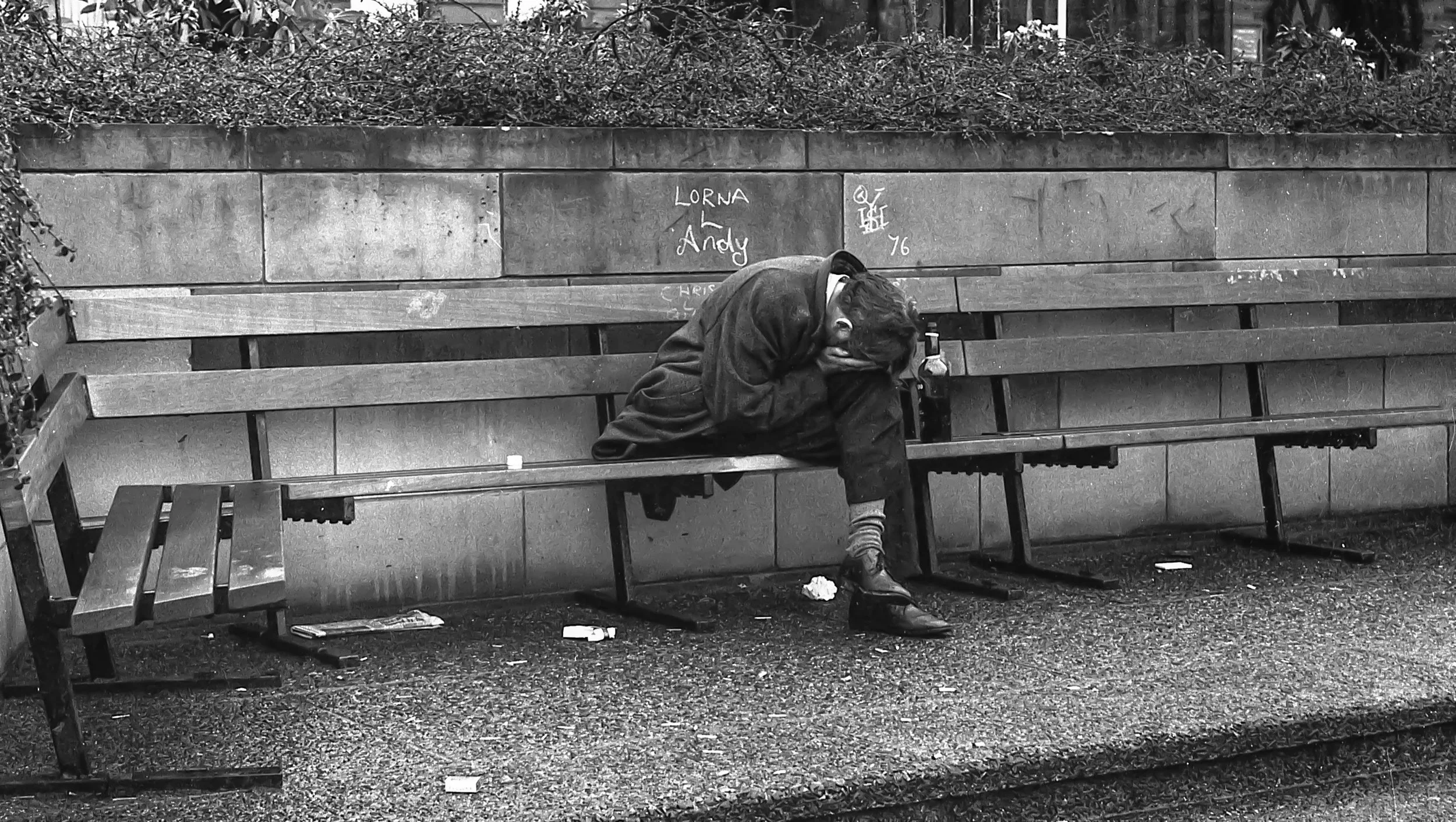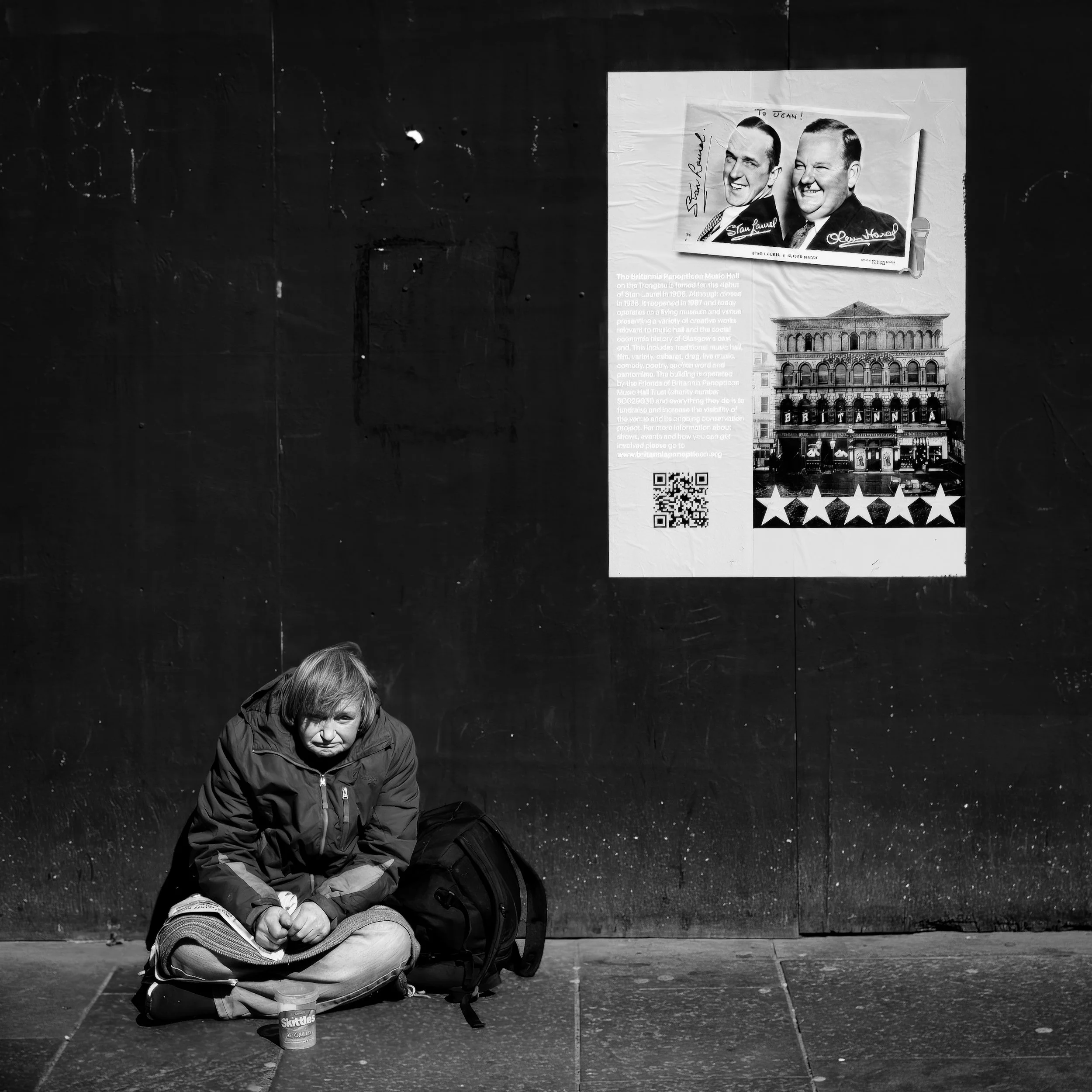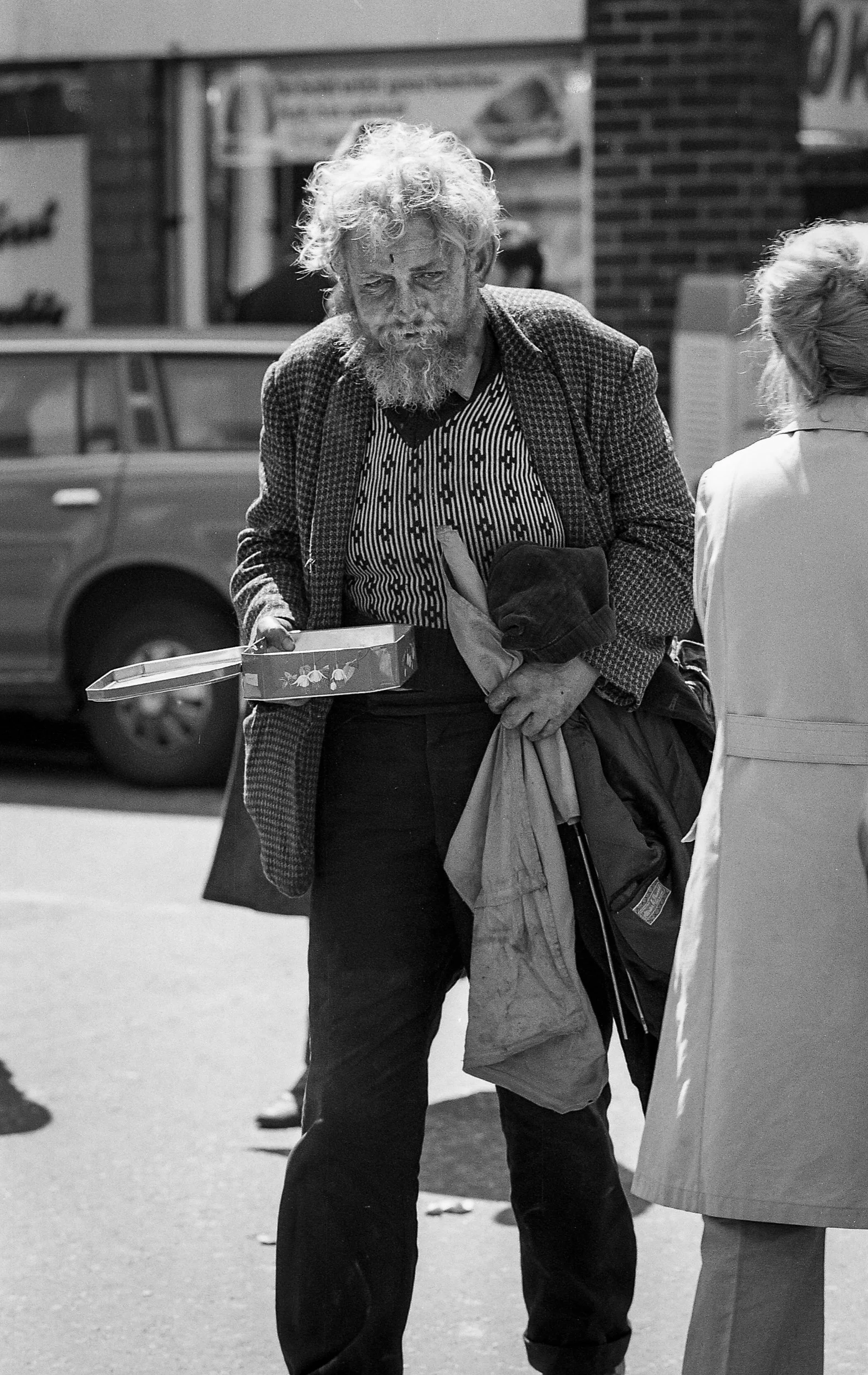Taking the shot…or not?
This week I would like to discuss something that street photographers seem to be split over, with some thinking it is totally acceptable whilst others claim it to be a taboo subject matter. I am talking about street beggars, homeless or generally down and out figures on the street.
I have had this discussion a few times with fellow street photographers and, being in the “take the shot” camp, I often find myself in the minority. I can’t understand why that would be the case as by photographing and publishing such photos it surely helps us to highlight their plight and documents the social conditions of the day. For decades photographers have been recording poverty and deprivation. As a Glaswegian I recall the images of Thomas Annan. Between 1868 and 1871 Thomas Annan executed a commission from the City of Glasgow to photograph the slums of the old town before their demolition. These showed people living on the edge of existence, including shoe-less children dressed in rags. Fast forward to the 20th century and numerous photographers were recording the demise of the Gorbals slums and those of Govan and other areas, including myself. This was happening all over the UK in fact as post war Britain was undergoing renewal.
But what about today? I notice as I travel about that we seem to have an increased population of people on the streets looking for your loose change, or in some form of drug induced stupor. These people (to me anyway), are all part of the tapestry of life on today’s streets. I don’t profess to have a solution, but it’s not a modern day problem. People talk about the ethical issues with taking pictures of someone that is down on their luck or who has lost their way. When it comes to taking photos of these individuals I think it comes down to the context in which you represent them in your image. I wouldn’t for example take a photo of someone in extreme distress or pain, therefore exploiting their situation in order to “get the shot”. Maybe if I was a war photographer or such like, these situations would be fair game for photography, but not on our streets. I would also never present a photo in such a way that makes fun of the individual at their expense.
I have found myself in situations where I have spotted someone on the streets down on their luck and have seen what I believe to be a good photo opportunity. In these situations I will take the photo first and then decide later as to how I present it. Sometimes it never sees the light of day again but in other instances it may form part of my portfolio of street images. I don’t think these people should be airbrushed from history, similar to the way we are airbrushing children out of contemporary photography as we fear the consequences and accusations. Recording their plight is documenting today’s streets in a similar way that Annan and others that came after him did.
As someone that enjoys recording and documenting life on our streets I don’t see any reason to change my mind on this subject and I will continue to record what I see without turning a blind eye or deciding that this or that subject is off limits. I would be interested to hear your thoughts on this topic in the comments, but in the meantime here are some shots I have taken over the years on this subject. If they offend you I offer no apology as they are our streets as I saw them, taken over the last 47 years, and I feel that they have to be documented.
I hope you have enjoyed this blog post and thank you for reading it. If you want to comment on this blog post please do so below or you can contact me by using the “Contact Me” facility in the website header.






